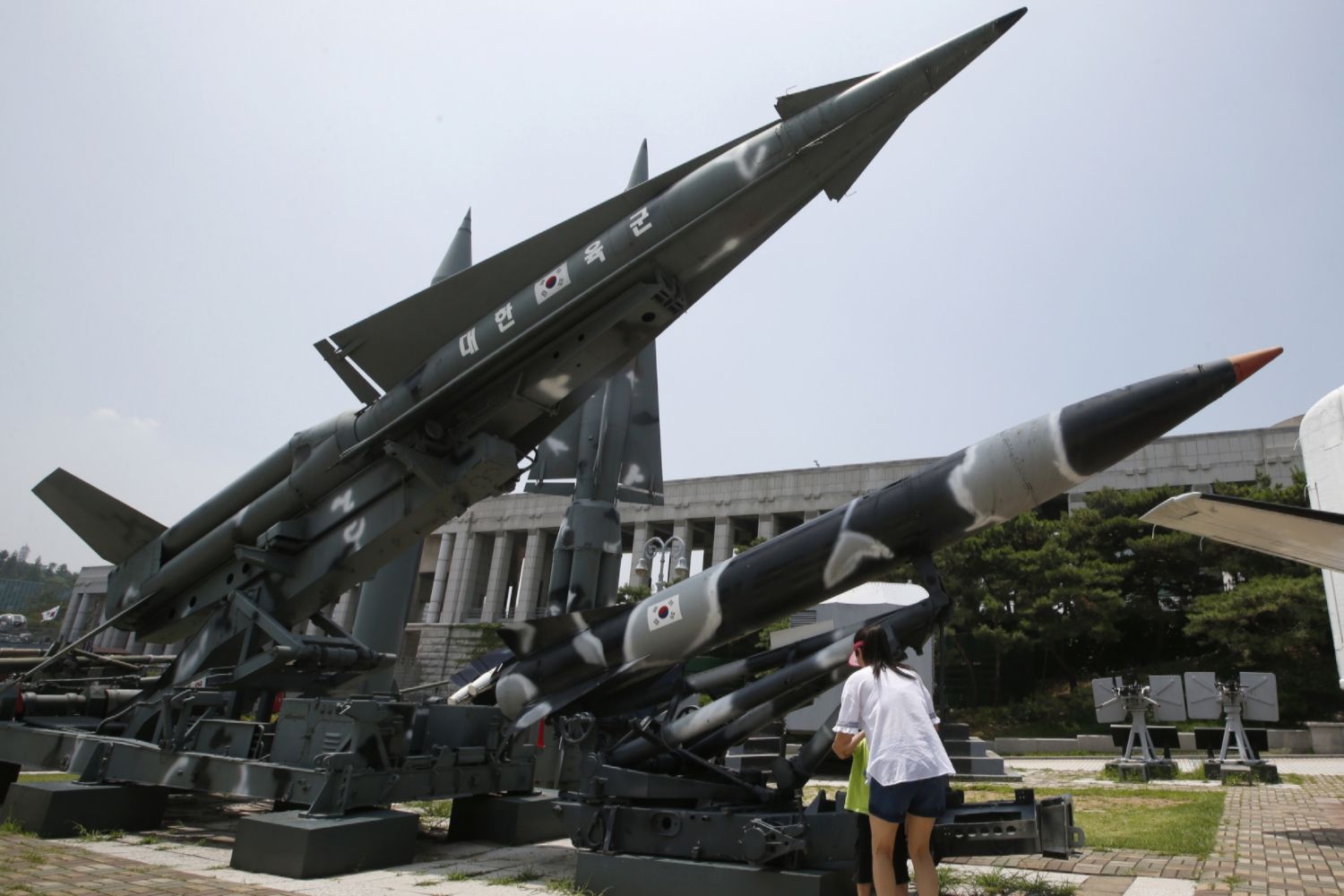North Korea test-fired three ballistic missiles on Tuesday, in further defiance of the international community and in apparent reaction to the planned deployment of a US defence system in the South.
The launches drew swift condemnation from the United States and Japan, who vowed a coordinated response to Pyongyang’s repeated violations of UN sanctions that bar it from weapons tests.
They come as North Korea’s isolation deepens after it said this month it was severing all diplomatic channels with the US.
Two SCUD missiles flew between 500 and 600 kilometres (310-370 miles) into the Sea of Japan, while a third, believed to be Rodong intermediate range ballistic missile, was fired about an hour later.
The trajectory of the Rodong missile was still being analysed, spokesman Jeon Ha-Kyu of Seoul’s Joint Chiefs of Staff (JCS) said.
The SCUD missiles’ range is such that they could strike anywhere within South Korea, the military said, adding that the latest tests were presumed to be linked to the North’s recent threats.
Pyongyang last week said it would take “physical action” after Washington and Seoul announced the deployment of a sophisticated US anti-missile defence system.
The announcement of the Terminal High Altitude Area Defense system, or THAAD, was prompted by a series of missile launches this year that analysts say demonstrate that the North is making progress toward being able to strike the US mainland.
Another military source that the SCUD missiles would likely be Pyongyang’s weapon of choice if it were to target places like Seongju, where the THAAD system will be deployed.
“We strongly condemn this and North Korea’s other recent missile tests, which violate UN Security Council Resolutions explicitly prohibiting North Korea’s launches using ballistic missile technology,” Pentagon spokesman Gary Ross said.
“We intend to raise our concerns at the UN to bolster international resolve in holding the DPRK (North Korea) accountable for these provocative actions,” Ross said.
Japanese Defence Minister Gen Nakatani said the latest launches “compromise peace and safety of the region, including Japan”.
“The Japanese government will strengthen cooperation with related countries, namely the United States and South Korea, and strongly urges North Korea to exercise self-restraint, while preparing for any contingencies,” he said.
Repeated tests
The North test-fired a submarine-launched ballistic missile on July 9, following back-to-back tests of a powerful new medium-range missile on June 22.
Those two missiles achieved a significant increase in flight distance over previous failed launches and were believed to be of a much-hyped, intermediate-range Musudan missile — theoretically capable of reaching US bases as far away as Guam, the South’s defence ministry said in June.
The North previously launched relatively short-ranged SCUDs in March, as it flexed its muscles in response to joint US-South Korea military drills just south of the border.
A US think-tank last week warned there was intense activity at a North Korean nuclear test site.
The US-Korea Institute at Johns Hopkins University said images from July 7 of the Punggye-ri site show what appear to be supplies or equipment stacked near the spot where the North conducted its fourth nuclear test in January.
The institute cautioned that it was not possible to determine whether this was maintenance or possible preparations for a fifth nuclear test.
“Nevertheless, it is clear that North Korea is ensuring that the facility is in a state of readiness that would allow the conduct of future nuclear tests should the order come from Pyongyang,” it added.










